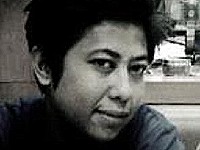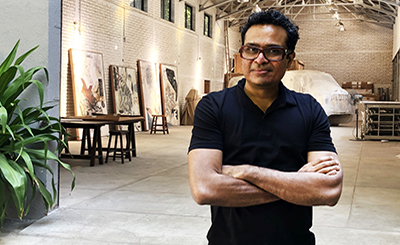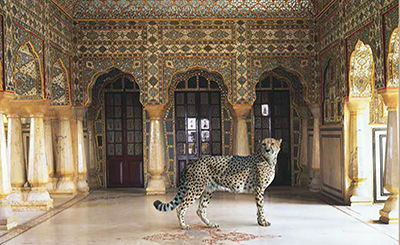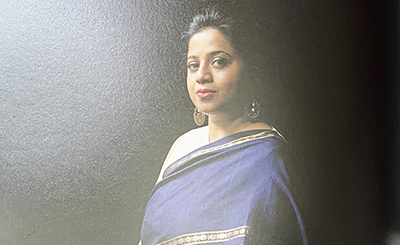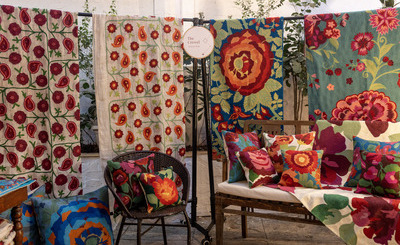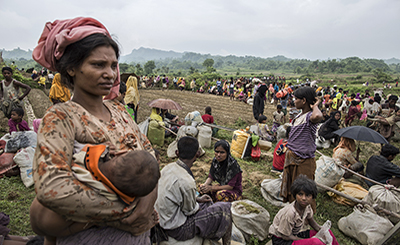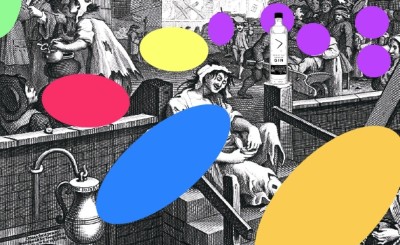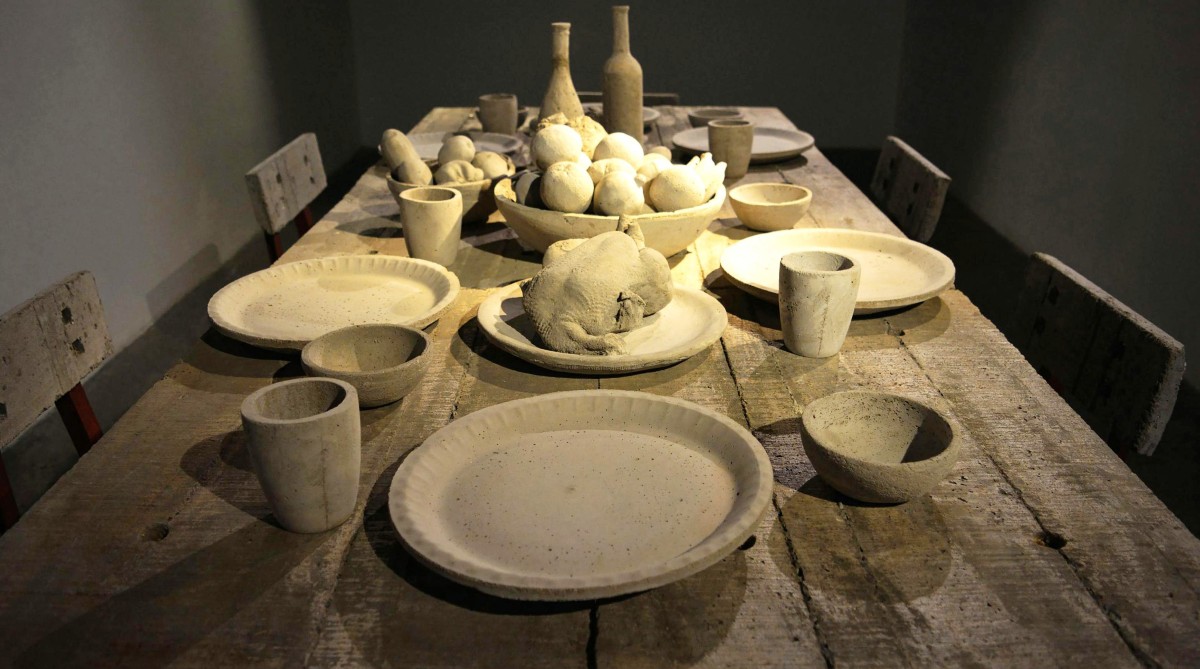
‘Concrete Dinner’ by Sayantan Samanta. Photos: Hasnain Soomar
An exhibition showcasing the works of ten young artists — who were chosen as top contenders for the MASH Young Artist Award — is on at the India International Centre. Of these ten, Sayantan Samanta has been declared the winner.
With an aim to promote emerging artists in the post-Covid scenario, an exhibition showcasing the works of ten young artists — who were chosen as top contenders for the MASH Young Artist Award — was held at the India International Centre, in association with knowledge partner KHOJ. The group exhibition, titled “Fleeting Identities,” opened on September 20 and will continue till September 29. Of the ten contenders, Sayantan Samanta has been declared the winner. One of his works, ‘Concrete Dinner,’ a striking display of an elite table laden with fruits and vegetables, is rendered in concrete, and evokes the shortage of food due to a variety of factors, from climate change to rapid urbanisation.
For young artists, Covid lockdown has been particularly difficult since it reduced their ability to showcase their work, network and even visit their larger studio spaces. While this has been true of all artists, young artists are particularly vulnerable given that they do not have a market presence or, in some cases, even a gallery to support them. Managing in these difficult times has become more of a challenge in a field that already faces its fair share of trials. With the art world opening up in the new normal, there has been an announcement of quite a few art awards for young artists, which has had positive impact on young people. These awards are set to help the young artists gain confidence and hone their leadership and organizational skills.
Samanta will be awarded Rs 2,00,000 for the Young Artist Award. The other artists featured include: Sibdas Sengupta, Tahsin Akhtar, Sarban Chowdhury, Sanayvi Naik, Sabiha Dohadwala, Roshan Vinod Anvekar, Pahul Singh, M. Thamshangpha and Deepak Kumar. Here is a brief outline of their artistic practice:
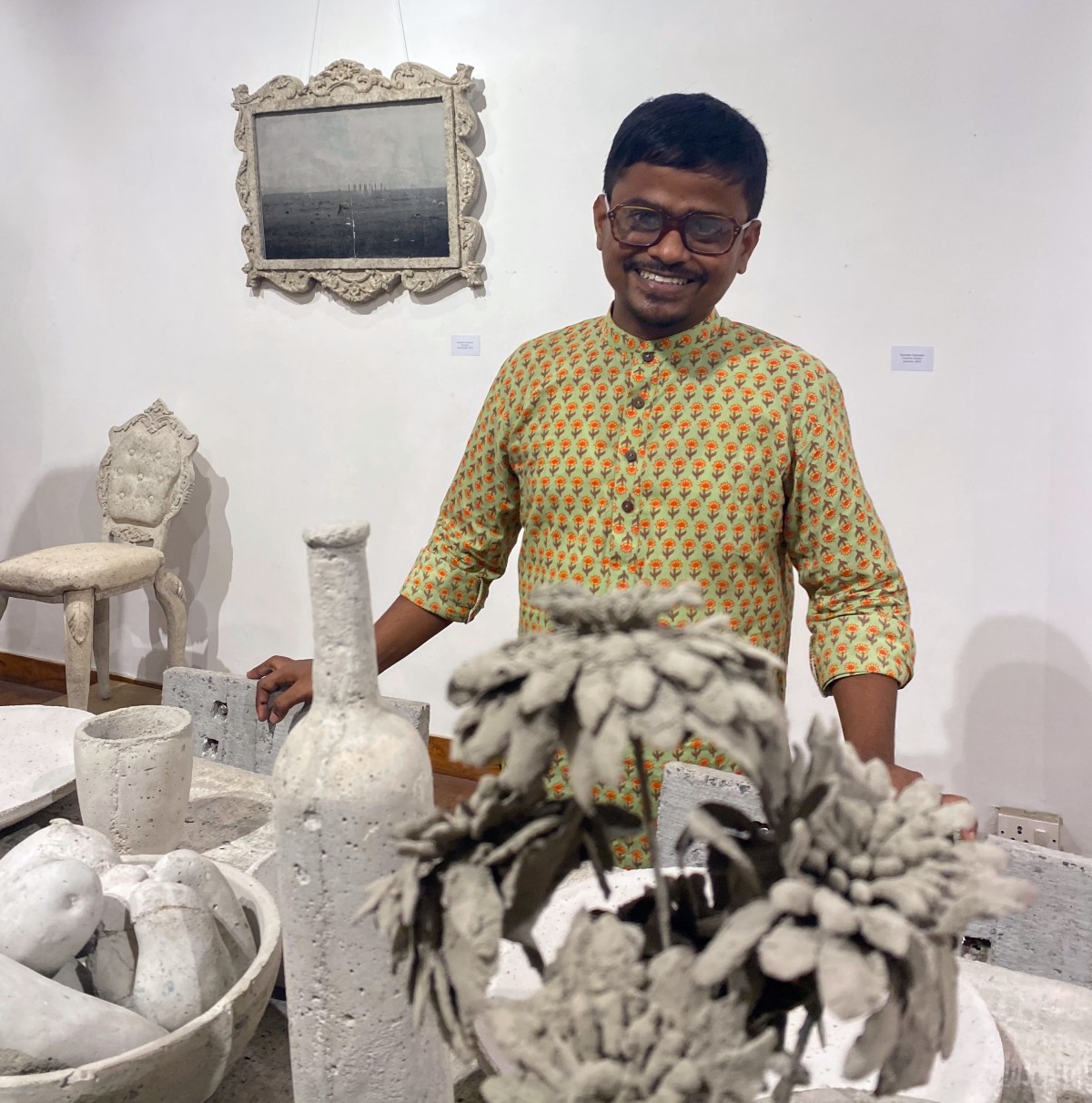
Sayantan Samanta, 29, is a Bengal-based artist whose work highlight the urgency of global agrarian issues. “My prime intention is to create a visual dialogue that advocates the need of socio-ecological sustainability and how the amalgamation of land degradation, rapid urbanization and climate challenges affect food security,” says Samanta. His sculptures, drawing and installations resonate with the grim picture of today’s reality where countries are faced with food shortage, depleting agricultural land, and increasing concretization. His concerns with food and farming come from his agrarian family background. His sculpture and paintings are evocative with that slight edge of darkness and irony that is both moving and engaging.
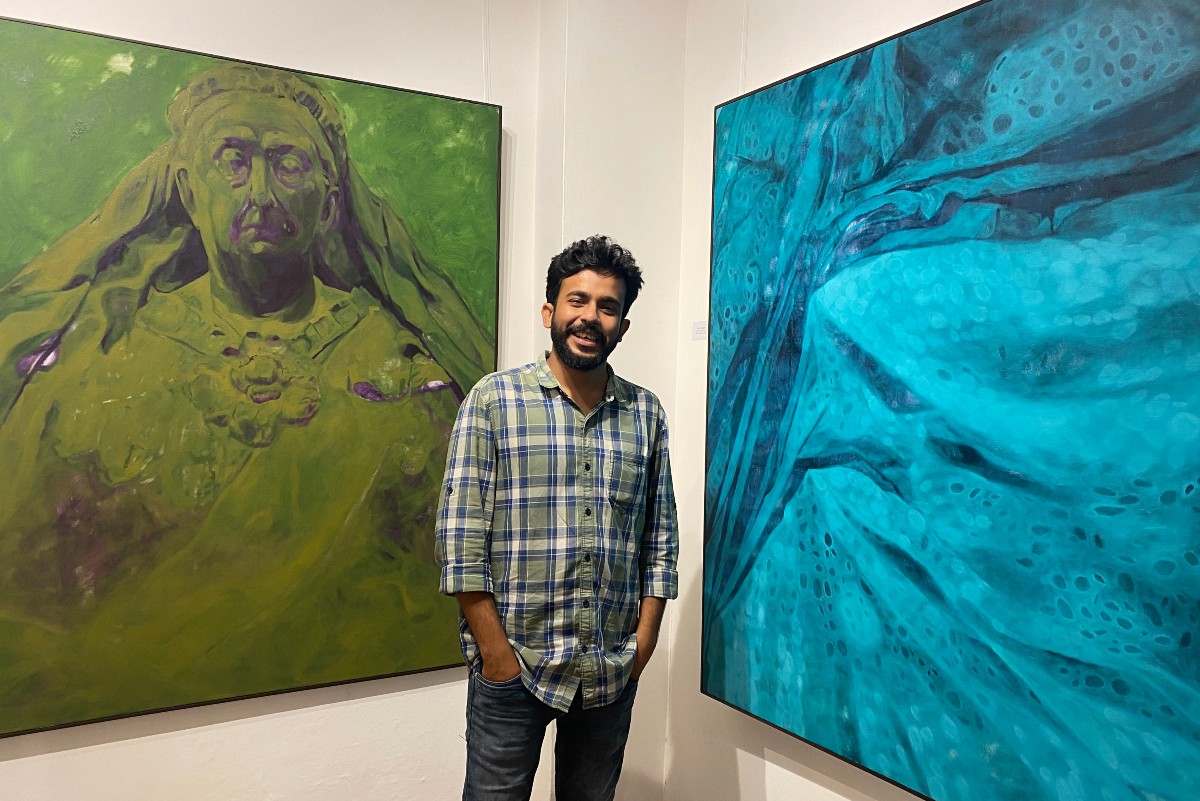
Sibdas Sengupta (29) is an Odisha-based artist, who works with paintings, installation and texts. “In my artistic practice, it has been an attempt to think through the ideas around discipline, technique and scale, and how, through the artistic production, different ontological means can be incorporated to generate various illusion-evoking aesthetics of the present,” he says. His paintings of regal statues of colonial powers in India is a strong and extremely relevant statement, given India’s Colonial past and the current debate of around Royalty in England post the death of Queen Elizabeth II in the UK.
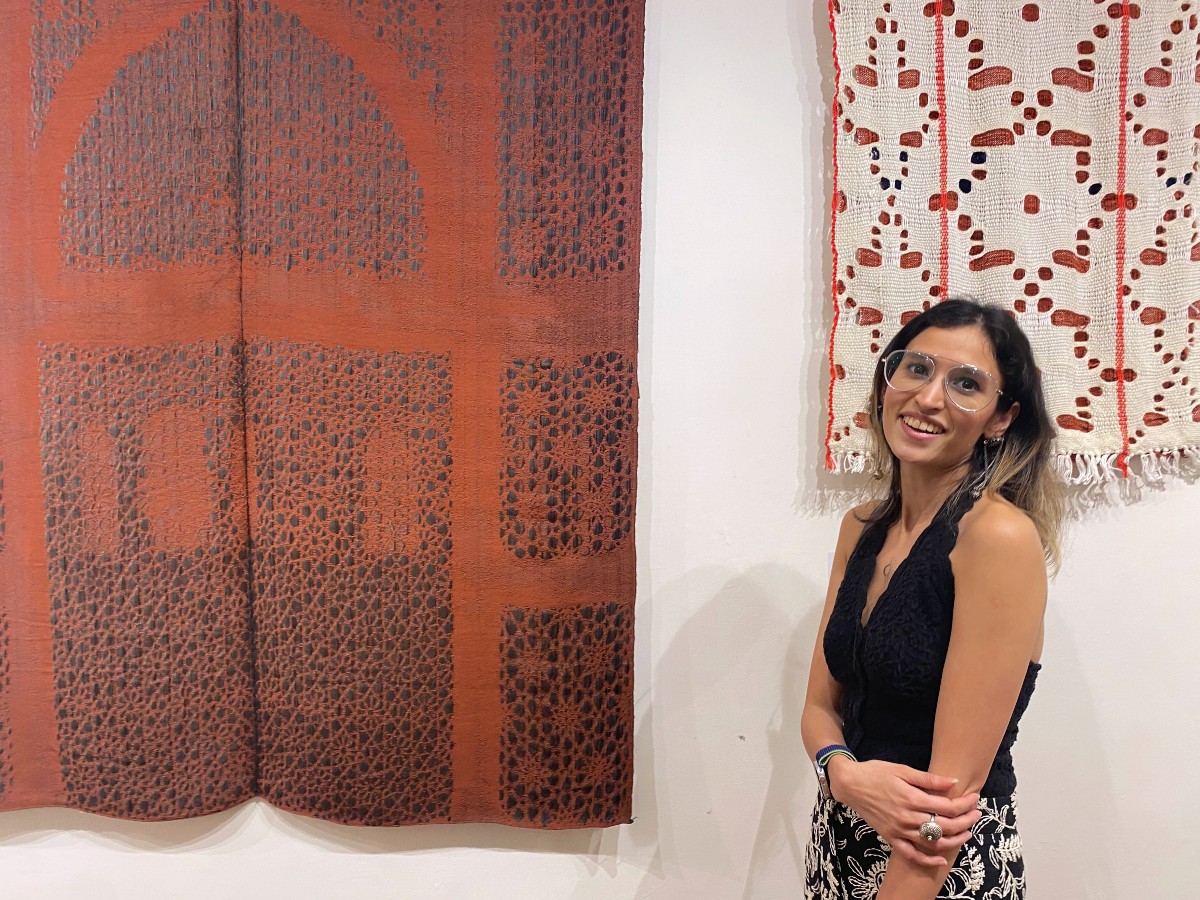
Sabiha Dohadwala (b.1995) approaches textile as a site of ‘integrating and disintegrating memories,’ images, and histories. Her works address the human tendency to forget over time and advocate a renewed way of understanding memory. Dohadwala captures cultural histories and lived experiences through the act of weaving. The tactile materiality of textile is ingrained with acts of remembering in the face of erasure. Her weaving is an evocation of her roots, from her grandmother’s time and the loosely knit together fabric is symbolic of not just her femininity but her culture as well.
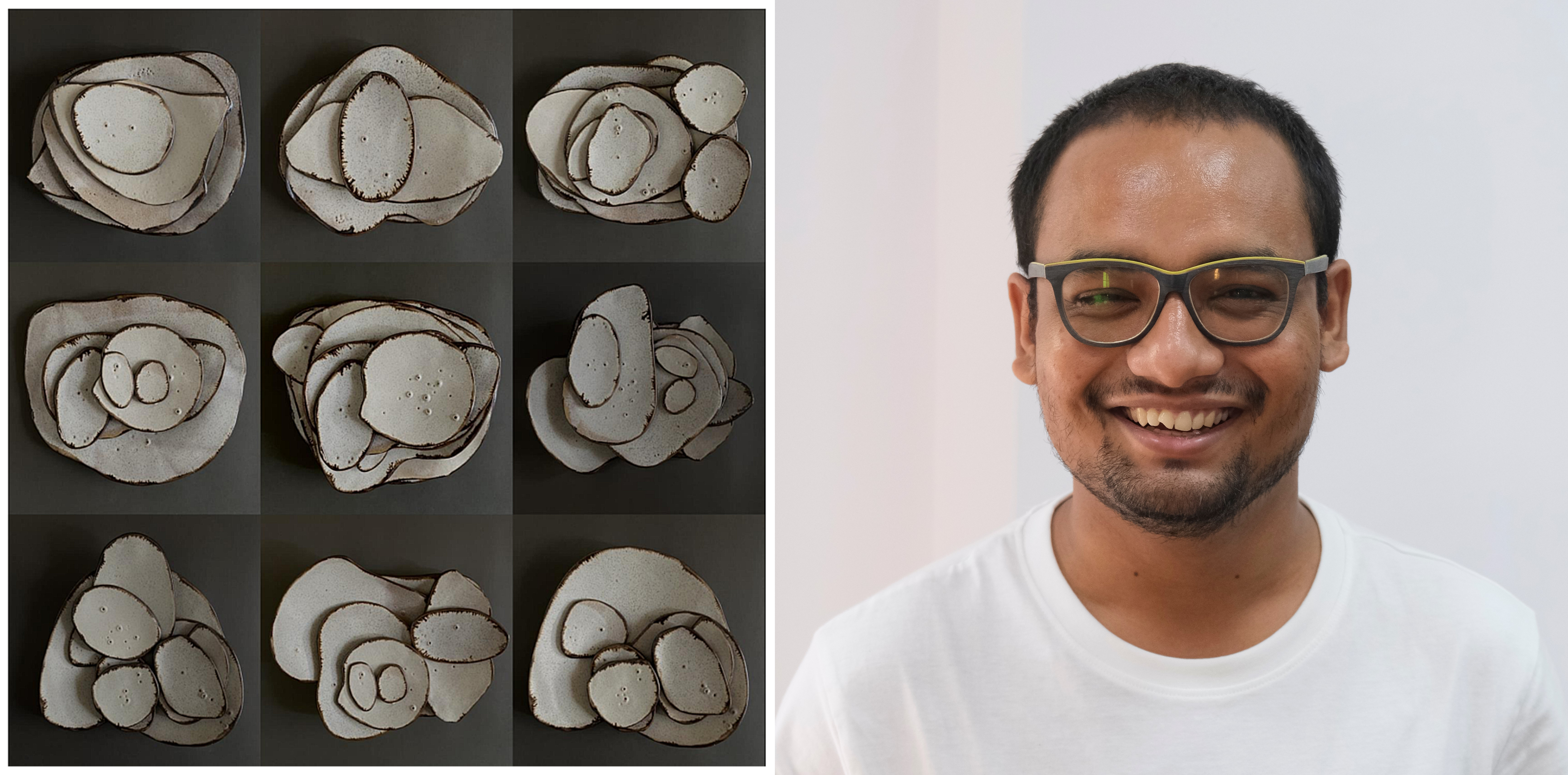
Sarban Chowdhury is currently based in Ahmedabad and he has a background in pottery and ceramic art. He explores forms, repetitions, time-worn textures, images and texts through clay. “I see my work as a diary. It’s a place for me to write down the feelings I normally keep for myself. Everything that I observe and experience around me somehow seeps into my subconscious mind and eventually reflects in my work,” reasons the artist.
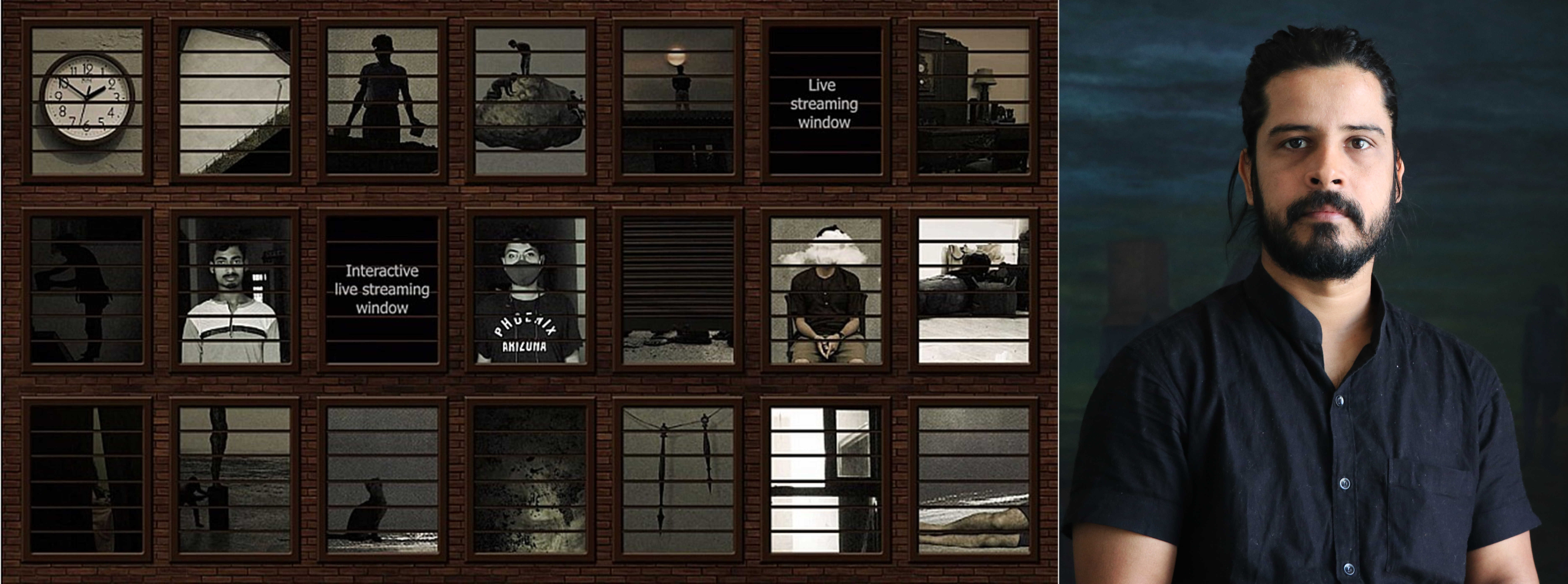
Tahsin Akhtar employs a variety of media to express himself from painting, photography, video, to kinetic sculpture, animation, projection mapping, and performance. His works deal with various phenomena: “…of multiple co-existing identities, perceptions and human-machine relationship in this digital era. My visual enquiry also inspired by ordinary day-to-day, close and critical observations of mundane lives and political regimes,” says Akhtar. He creates absurd, satiric visuals through technological exploration.
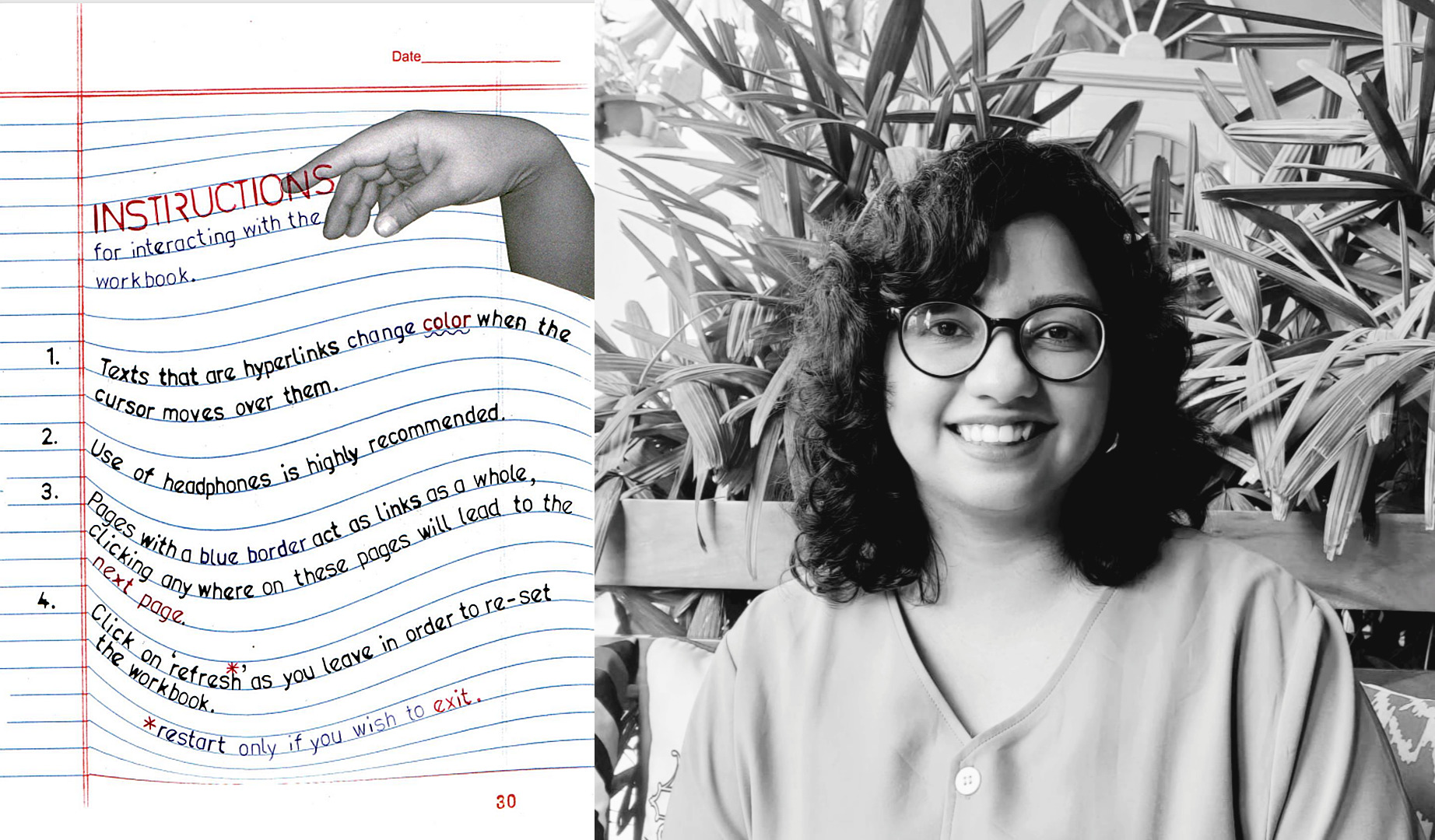
Pahul Singh is an artist who works with language as a metaphor for her migrant status and displaced existence as a young artist based in Rajasthan whose understanding of language is different from the text that exists around her. “My practice is informed by configurations of language that are generated by displacement and cultural exchange. I was born and raised in a place where the local language and my mother’s tongue did not correspond. Currently, I work towards looking at the book through the lens of the digital — from the surface of the paper to the surface of the screen, where the page is no longer fixed,” says Singh.
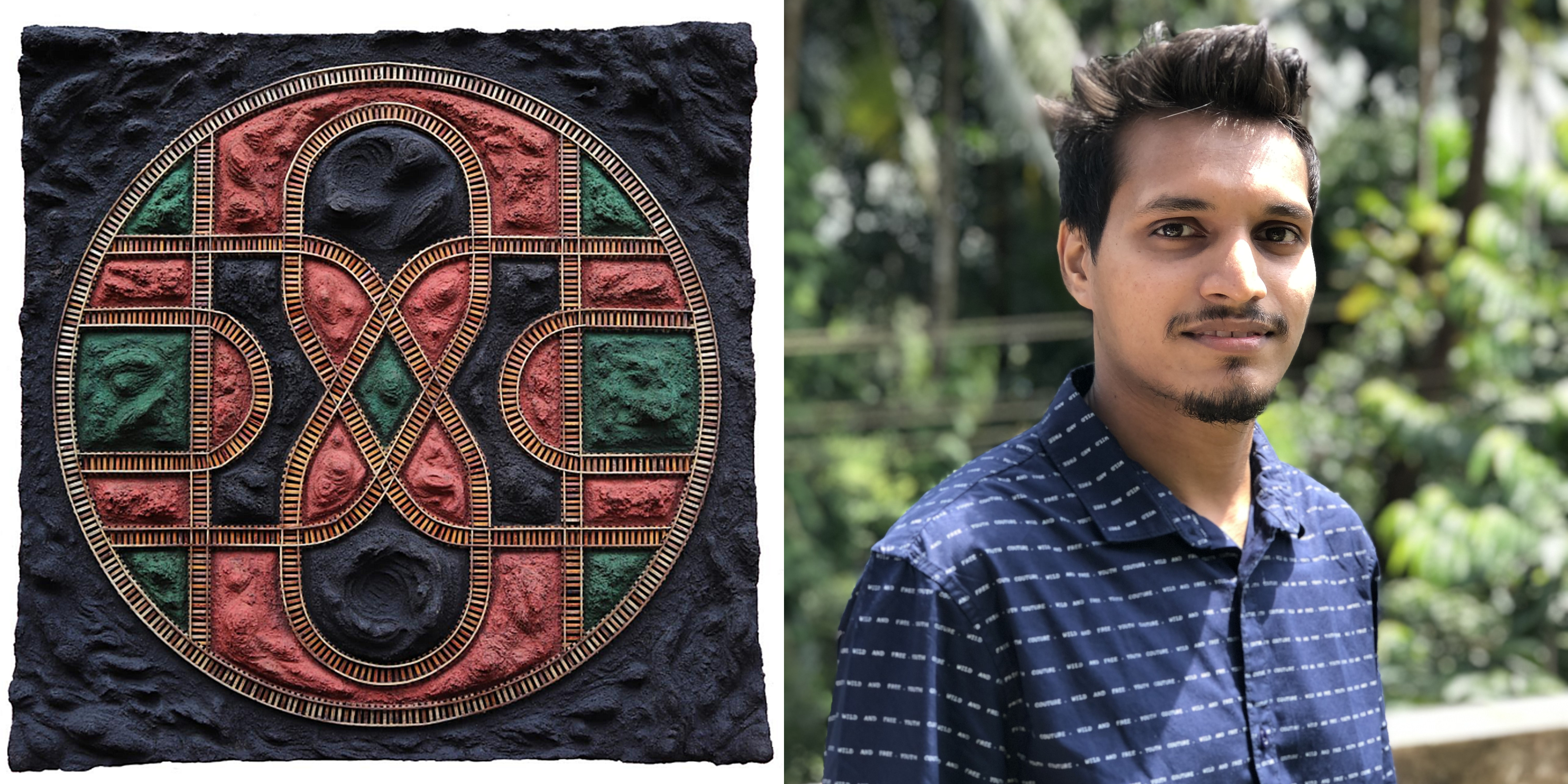
Sanayvi Naik is a Goa-based artist who also studied at MSU Baroda. “My sculptures are an amalgamation of different materials in search of my abstract understanding of my immediate surroundings. The form is an integral part of my work; both form and material inform the context and intent of the sculpture,” says Naik.
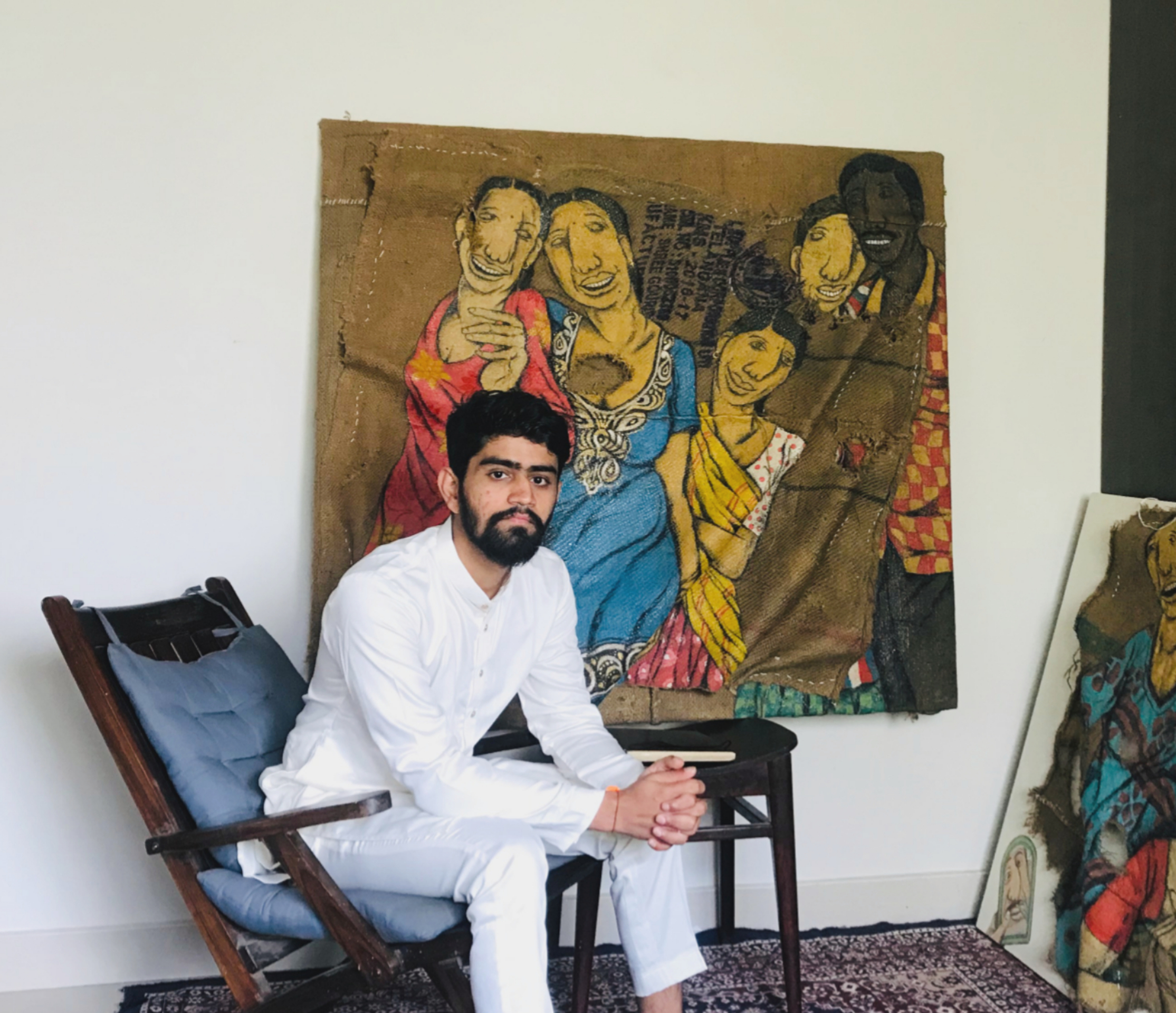
Roshan Vinod Anvekar hails from Karwar, Karnataka, where he practises as a freelance artist. He has done his BFA from Sir J J School and MVA from Chhattisgarh. His works depict village life as well as explore their materials. “I have done a different experiment in my artworks. I am inspired by village life. I visited many rural areas and spent time with rural people,” he concludes.
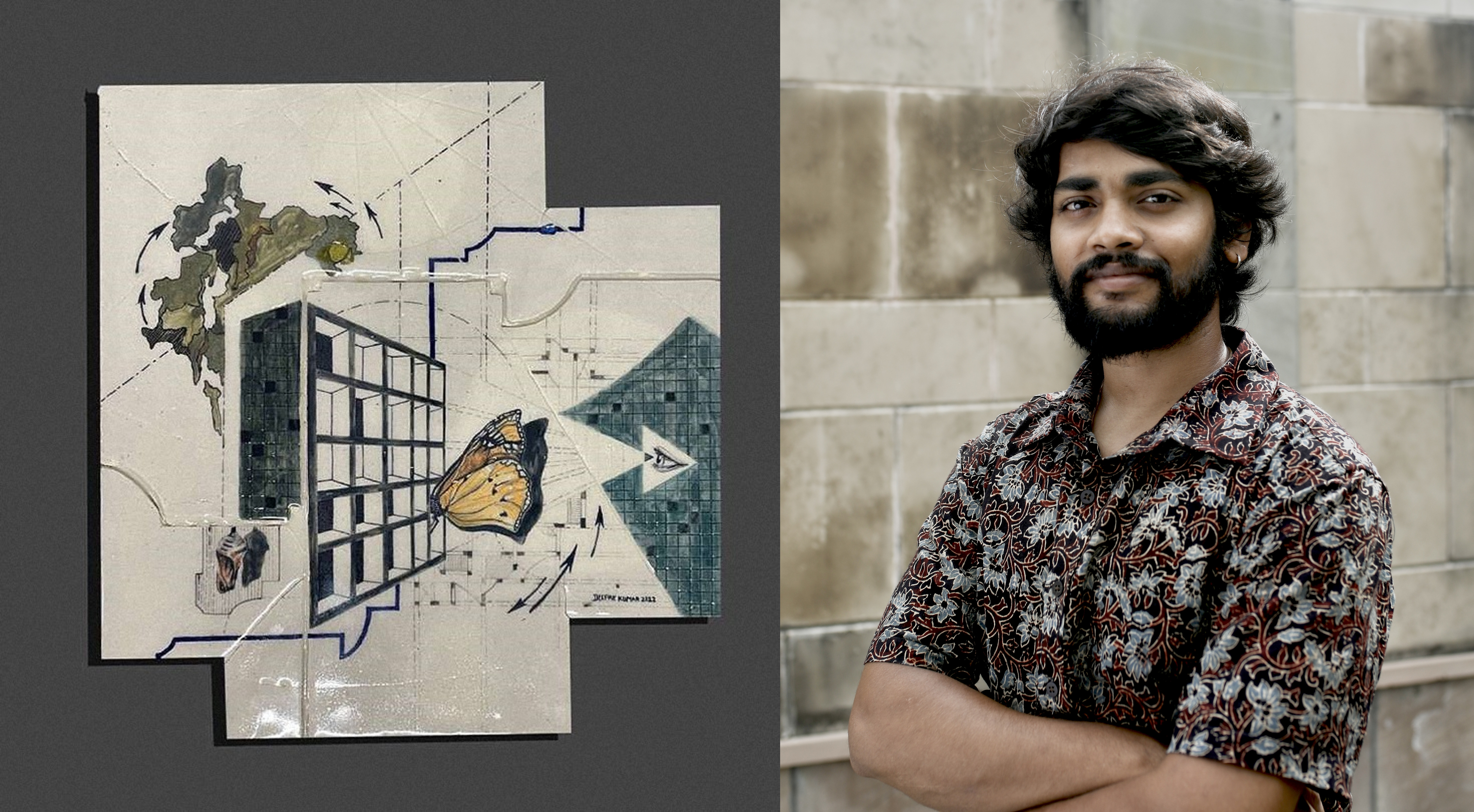
Deepak Kumar says that his paintings, sculptures, and installations, employs diverse materials such as wood, metal, ceramic, and stone. His work endeavours to create a conversation on the uneasy relationship between human habitations and their surrounding ecosystems. "Over the past 12 years of dwelling in the city, I have documented, photographed and archived animal and bird carcasses and bones that I found trapped in the urban jungle. Each one of my works is built upon those found objects," says the artist.
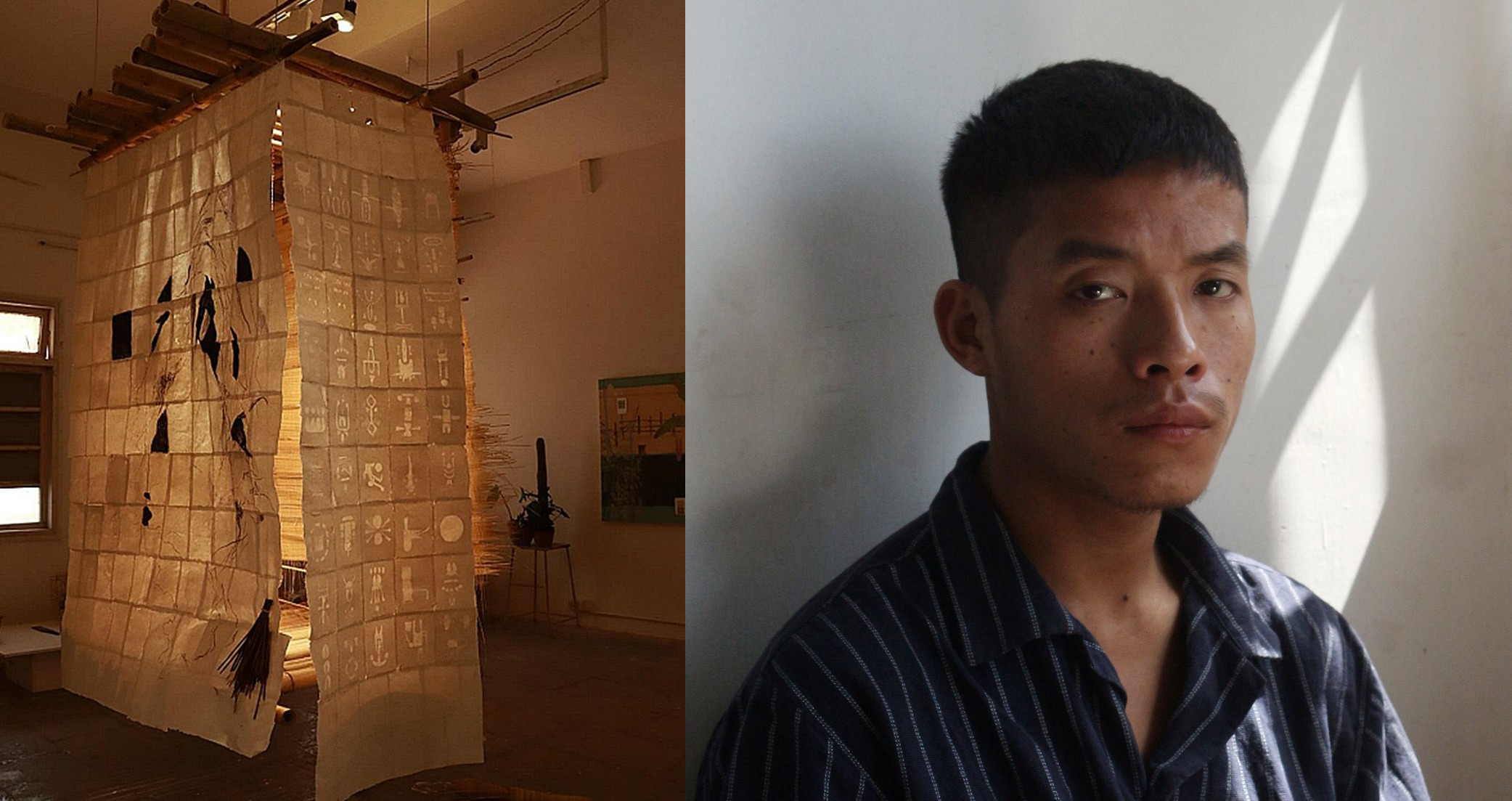
M. Thamshangpha is an alumnus of MSU Baroda, where he did his Master’s in painting, and he currently works on his Naga tribal culture inspired by the words of his mother that talk of the importance of nature and its delicate balance.
“The forms, motifs, medium and imagery in Naga tribal culture sprout from observing the indigenous flora and fauna. The relations developed within the humans and their habitat in these locations are of co-existence with sustenance,” says Thamshangpha. Living away from his home town, he faces a sense of alienation and discrimination and his artworks talk of this alongside other environmental issues.
More from Arts
Comments
*Comments will be moderated



